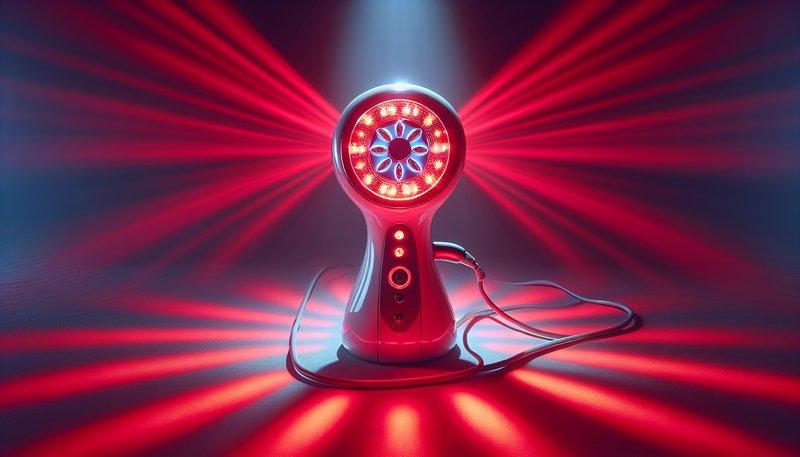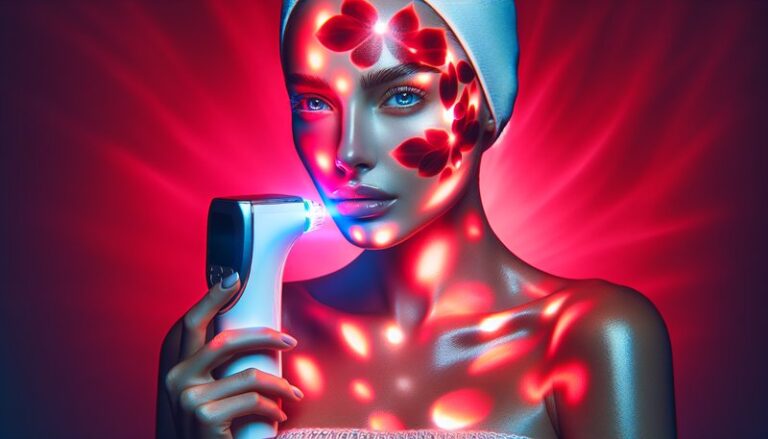Does Red Light Therapy Increase Collagen?
Does Red Light Therapy Increase Collagen?
Is red light therapy the secret to youthful skin?
This article explores the fascinating science behind red light therapy and its potential to boost collagen production. We’ll delve into the benefits of this non-invasive treatment, examine how it works, and provide insights on its effectiveness in enhancing skin health.
Key Takeaways
- Red light therapy is shown to stimulate collagen production, which can improve skin texture and elasticity.
- The treatment is painless and has minimal side effects, making it an attractive option for many.
- Regular sessions can lead to long-term benefits for skin health, particularly in reducing fine lines and wrinkles.
What is Red Light Therapy?
Red light therapy (RLT) is a treatment that uses low-level wavelengths of red light to penetrate the skin. This form of therapy is often used in dermatology and physical therapy for its purported healing effects. The red light interacts with cells, promoting processes that can enhance skin health and accelerate healing.
RLT works through photobiomodulation, where light energy is absorbed by the mitochondria in cells, leading to improved cellular function. This process can enhance collagen synthesis, an essential protein for maintaining skin structure, firmness, and elasticity.
How Does Red Light Therapy Work?
Red light therapy operates at specific wavelengths, typically between 600 to 900 nanometers. At this range, the light stimulates skin cells while also increasing blood circulation, which can enhance the overall health of the skin.
Research has suggested that RLT can increase fibroblast activity, a crucial aspect in collagen production. When fibroblasts are stimulated, they create new collagen and elastin, essential components that keep the skin looking youthful.
What are the Benefits of Red Light Therapy?
Red light therapy offers several advantages when it comes to skin health and collagen production. Below are some key benefits:
Enhanced Collagen Production
Studies have repeatedly shown that RLT increases collagen levels in the skin, helping to reduce signs of aging. Clinical trials suggest significant improvements in skin elasticity and texture with consistent treatment.
Improved Skin Tone and Texture
In addition to collagen production, red light therapy can minimize age spots and hyperpigmentation, leading to a more uniform skin tone. Users often notice a reduction in the appearance of fine lines and wrinkles after a series of treatments.
Accelerated Healing
RLT is known for its healing properties, not only benefiting skin health but also aiding in recovery from injuries or surgical wounds. The enhanced blood flow promotes faster healing, making it a valuable tool for post-operative recovery.
Pain Reduction
Some users of RLT report a reduction in chronic pain conditions and inflammation, as light can penetrate deeply into tissues, providing relief without the need for medications.
Is it Possible to Increase Collagen with Red Light Therapy?
Absolutely, evidence supports that red light therapy can effectively boost collagen production. This process is facilitated through the stimulation of fibroblasts when exposed to red light wavelengths. The feasibility of using RLT makes it an appealing option for those seeking non-invasive methods to enhance their skin’s health.
What are the Advantages of Increasing Collagen with RLT?
One significant advantage is the natural approach to skincare. Unlike fillers or surgical interventions, RLT promotes collagen production organically, leading to gradual but noticeable improvements.
Another advantage includes the versatility of RLT. It can be used alongside other treatments for enhanced results, such as skincare products that contain retinoids or hyaluronic acid.
What are the Disadvantages of Increasing Collagen with RLT?
While there are many benefits, some drawbacks exist that potential users should consider.
One concern is the time commitment; achieving noticeable results usually requires multiple sessions, which may be impractical for some individuals.
Additionally, while RLT is generally safe, some users may experience temporary redness or sensitivity following a session, which can be mistaken for an adverse reaction.
Lastly, the results may vary among individuals; some people may not see substantial improvements in collagen levels.
What are the Things to Consider Before Starting Red Light Therapy?
Before agreeing to a series of red light therapy sessions, there are several important factors to consider.
Consult a Professional
It’s crucial to consult with a skincare professional or dermatologist to determine if RLT is suitable for your skin type and concerns. They can provide tailored advice and recommendations.
Understand Your Skin Conditions
Individuals with certain skin conditions or sensitivities should carefully consider whether RLT is appropriate for them. It’s important to discuss any potential contraindications with a healthcare provider.
Budget for Regular Sessions
Red light therapy can be costly. Pricing varies by location and the type of equipment used, so consider your budget and the potential long-term commitment.
What are the Alternatives to Red Light Therapy?
If red light therapy doesn’t appeal to you, several alternative treatments for increasing collagen production and improving skin health exist.
Microneedling
This procedure involves using tiny needles to create micro-injuries in the skin, stimulating collagen production. It’s effective for reducing fine lines and improving skin texture.
Chemical Peels
Chemical peels use acids to exfoliate and remove the outer layer of skin, promoting new skin growth and collagen synthesis underneath. They can also effectively address pigmentation issues.
Discover the insights in Can Red Light Therapy Help Gums?
Laser Treatments
Laser therapy provides targeted treatment to the skin for collagen stimulation and tightening. Various types of lasers can be utilized depending on individual skin concerns.
Conclusion: Is it Recommended to Use Red Light Therapy for Collagen Production?
Red light therapy is a promising option for those looking to enhance collagen production naturally. With its variety of benefits, including improved skin texture and healing properties, it is an appealing alternative to more invasive procedures. However, like any treatment, it may not be suitable for everyone, making it essential to weigh personal circumstances and consult with a professional.
Check our latest on Red Light Therapy Frequency
Frequently Asked Questions
How many sessions of red light therapy are needed for results?
Typically, most people require multiple sessions—generally ranging from 5 to 10—to see significant results, with ongoing maintenance sessions afterward.
Is red light therapy safe for all skin types?
Yes, RLT is generally safe for all skin types, but individuals with specific skin conditions should consult with a dermatologist before starting treatment.
Can I do red light therapy at home?
Home devices are available and can be effective, but professional treatments often use more powerful equipment that may yield faster or more noticeable results.
How long does a red light therapy session usually last?
Sessions generally last between 10 to 30 minutes, depending on the treatment area and the device used.
Are there any side effects associated with red light therapy?
While side effects are rare, some users might experience temporary redness or irritation after treatment, which usually subsides quickly.






